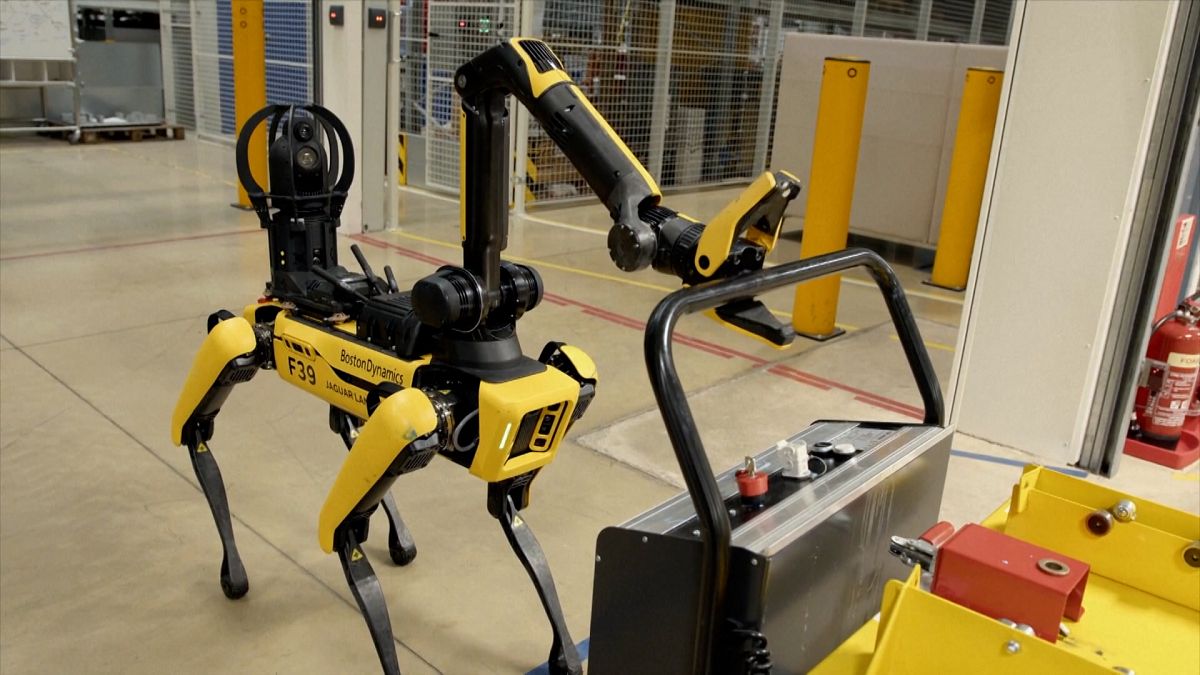Jaguar Land Rover (JLR) has introduced Rover, an advanced robot dog equipped with artificial intelligence, to patrol autonomously in their manufacturing centre in Wolverhampton, UK. Rover is designed to perform various tasks such as equipment checks, monitoring battery temperatures, and inspecting electric vehicle components. This cutting-edge robot is equipped with five cameras with thermal imaging and advanced sensors, allowing it to carry out inspections while maneuvering through factory corridors and avoiding obstacles with ease. By doing so, Rover improves safety and efficiency in the manufacturing centre by monitoring the condition of electric vehicle batteries, freeing up engineers to focus on maintenance tasks.
The deployment of Rover at the JLR manufacturing centre showcases the integration of artificial intelligence and robotics in the automotive industry. This innovative robot dog is capable of autonomously carrying out tasks that would typically require human intervention, such as equipment checks and battery temperature monitoring. With its advanced sensors and thermal imaging cameras, Rover can navigate through the factory environment efficiently, ensuring that electric vehicle components are inspected thoroughly. This integration of technology not only streamlines operations but also enhances safety measures by providing real-time monitoring of critical components.
One of the key features of Rover is its capability to monitor the condition of electric vehicle batteries. By inspecting battery temperatures and overall health, Rover plays a crucial role in ensuring the efficiency and longevity of these essential components. This proactive approach to battery monitoring enables engineers to identify potential issues early on, allowing for timely maintenance and preventing any potential failures. Additionally, by offloading these monitoring tasks to Rover, engineers are provided with more time to focus on maintenance activities and other critical tasks within the manufacturing centre.
Furthermore, the use of Rover in the manufacturing centre highlights JLR’s commitment to embracing technological advancements and enhancing operational efficiency. By leveraging artificial intelligence and robotics, JLR is able to improve safety measures, streamline inspections, and prioritize maintenance tasks effectively. This proactive approach to integrating cutting-edge technology not only enhances productivity but also underscores JLR’s dedication to innovation in the automotive industry. With Rover patrolling autonomously and conducting inspections, JLR is setting a new standard for manufacturing practices in the automotive sector.
In conclusion, Rover, the robot dog from Jaguar Land Rover, represents a significant step forward in the integration of artificial intelligence and robotics within the automotive industry. By autonomously patrolling the manufacturing centre, conducting equipment checks, monitoring battery temperatures, and inspecting electric vehicle components, Rover showcases the potential of advanced technology in improving safety and efficiency. With its advanced sensors, thermal imaging cameras, and agile mobility, Rover is able to navigate through factory corridors, avoiding obstacles and providing real-time monitoring of critical components. As JLR continues to prioritize innovation and technological advancement, Rover’s deployment serves as a testament to the company’s commitment to embracing cutting-edge solutions for enhancing operational processes in the automotive sector.











